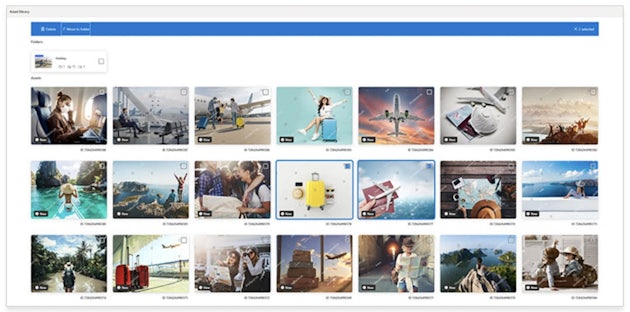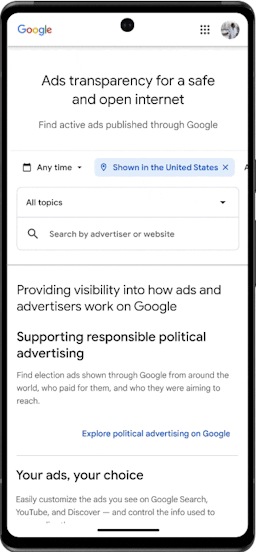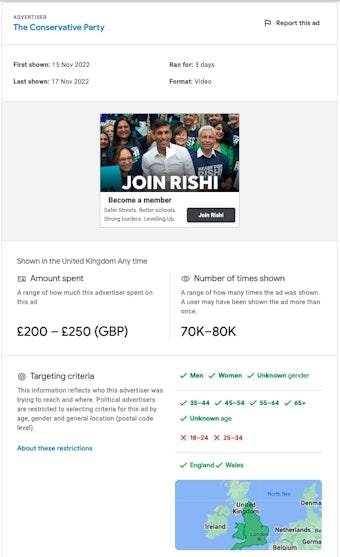Welcome to the latest blog from Impression on Paid Search industry updates, where we uncover the latest PPC trends to help you stay ahead of the curve.
Keep reading to discover:
As usual, traffic light imagery is featured throughout to indicate the importance of each new update – red denoting a priority update, green representing a less important update and amber lying somewhere in the middle.
Microsoft launches an AI-driven tool to innovate keyword targeting for retailers

April starts off with an exciting feature from Microsoft Ads – PromoteIQ – a platform which aims to disrupt the traditional way of keyword targeting in the retail space. Microsoft’s new platform is already showing promising results, with retailers who used PromoteIQ seeing a 320% higher click-through rate and an 8 times higher revenue per thousand impressions.
With an increasingly complex user journey, shoppers’ behaviours are changing online. Instead of searching for specific products, users are more likely to browse categories of products while they are in the consideration stages. Hence, by only targeting a few keywords on the retailers’ website, advertisers might miss out on potential customers, limiting the performance of their campaigns.
The current approach to keyword targeting involves doing keyword research, grouping keywords in campaigns and ad groups, and manual management of keywords. In comparison, using AI-driven algorithms, PromoteIQ means less manual work, as advertisers are required only to test and keep the high-performing keywords. Moreover, PromoteIQ leverages category behaviours and targets buyers based on the categories they browse online. Then, it automatically boosts bids to ensure the retailers’ ads appear to those users who indicate a higher chance of purchase. As a result, users will be shown more relevant ads which match their buying intent. To further improve the clients’ online shopping experience, retailers can optimise their websites by consolidating their product categories.
What does this mean for me?
This news is especially important for businesses in the retail sector, as Microsoft Ads’ new tool will mean increased reach and potentially higher sales and revenue for retailers.
From automated bidding strategies to AI-driven campaign types like Performance Max, digital marketing practices have been in a continuous transformation over the past years. Still, the way marketers approach keywords have remained similar. That’s why Microsoft’s new platform has the potential to disrupt the traditional way of keyword targeting and might determine advertisers to abandon the current practices in favour of an AI-driven tool.
As the digital marketing landscape continues to grow and customers’ journey becomes more complex, PromoteIQ is offering marketers a unique solution to ensure shoppers have an improved shopping experience, while maximising reach and revenue for retailers.
Microsoft Ads introduces new features to its user interface

Microsoft continues to make improvements within its UI and April has seen the platform introduce changes to ensure Microsoft Ads is up to date with the evolving digital landscape as well as new features to help marketers manage their accounts more efficiently.
The first and most significant change is rolling out broad match modifier keywords, replacing them automatically with broad match keywords, in accordance with Google’s removal of broad match modifier back in 2021. Microsoft notified advertisers of this change over the next few weeks and for the moment no action is required from the marketers’ side. Microsoft assures this change will not impact bidding strategies and will have a positive effect on sales and CPA.
The second feature Microsoft added is the ‘Target Bidding’ column which marketers can add to the campaign grid under the ‘modify column’ command. As automated bidding becomes increasingly important in this new digital landscape, Microsoft allows marketers to view and edit the target bid value directly from the campaign grid. This function is available for standalone or portfolio bidding, but only for campaigns using Target Impression Share, Target CPA or Target ROAS strategies.
The last function introduced in April is enabling bulk operations in the asset library. Marketers can now organise image and video assets in the Asset Library more easily, using bulk operations to perform tasks such as deleting folders, deleting multiple assets, moving multiple assets at once and adding subfolders into their main folders. As visual assets become increasingly important for campaigns’ performance, this new function will allow for a more seamless workflow for advertisers and better management of images and videos for their campaigns.

What does this mean for me?
These new features represent a part of Microsoft’s ongoing efforts to stay ahead of the curve and to provide a seamless workflow to advertisers, allowing them to manage their accounts more easily. Microsoft’s continuous improvements to its platform highlight its growing importance as a search engine provider in their efforts to compete against Google and other engines for more users and market share.
Google is deprecating four attribution models for advertisers from Google Ads

Ginny Marvin, official Ads Product Liaison at Google, announced on her twitter last week that Google is planning to remove four attribution models from both its two popular marketing platforms: Google Ads and Google Analytics.
The sunsetting attribution models are:
- Position-based
- Time decay
- First click
- Linear
From Ginny Marvin’s tweet, marketers can learn that the four models will stop being available for new conversion actions in Google Analytics from May 2023 and in Google Ads from June 2023. Finally, the official sunset of the attribution models for both platforms is planned for September 2023.
Google has emphasised that the planned changes will not impact last click and external attribution models.
What does this mean for me?
Google explains in the official statement that the models don’t provide enough flexibility needed to adapt to evolving and increasingly complex consumer journeys these days. To meet this demand, Google created a data-driven attribution (DDA) model, which utilises Google AI to understand the real impact each touch point has on a conversion made during a consumer journey. Moreover, Google states that when the DDA model is used together with automated bidding, advertisers can expect better performance.
Google underlined that the DDA model is the most popular used attribution model for conversions utilising automated bidding strategies in the platforms. Additionally, Google provided an interesting statement that currently, less than 3% of all Google Ads web conversions are attributed to these four going away models.
Google announces the Ads Transparency Center

Alejandro Borgia, official Director of Product Management at Google, announced on Google Blog that Google is planning to launch the new Ads Transparency Center platform. The platform’s aim is to provide users with the ability to learn more about the ads they saw across Google Search, Display and YouTube. When using the searchable database, users will have free tools to learn more about product or service ads they saw in Google’s network and understand which ads were shown in certain regions, what ad formats they saw, and when was the last date they displayed it.

Google Ads Transparency Center will offer greater transparency for political ads. Users will have the ability to display a range of how much an advertiser spent on its political ads, how many times an ad was shown as well as targeting criteria that the advertiser was trying to reach. Additionally, the tool offers an insights tab, which can offer more relevant pieces of information about the advertiser in the form of easy-to-understand charts.

This is another attempt made by Google to show its genuine commitment to ensuring transparent and safe paid advertising offered by businesses towards Google’s users. My AdCenter can be found using this link. Users can filter displayed ads by brand, topics and category.
What does this mean for me?
Google Ads Transparency Center can be utilised by advertisers as a new research tool to analyse competitors’ paid ads in Google advertising networks across Google Search, Display and YouTube. Digital marketers will have access to a useful tool to monitor what ad copy was using their competitors at a particular day range and can get inspired by the general design of competitors’ creative assets.
It is worth mentioning that Google is following the example of Meta, which launched a similar tool called Facebook Ad Library in May 2018. It took five years for Google to follow the example and build its own platform, but better late than never. Our PPC team has already started testing the new tool in practice.
Look out for our next blog in May for more paid search industry updates to inspire your PPC strategy. If you want to talk about your business aspirations, get in touch!



